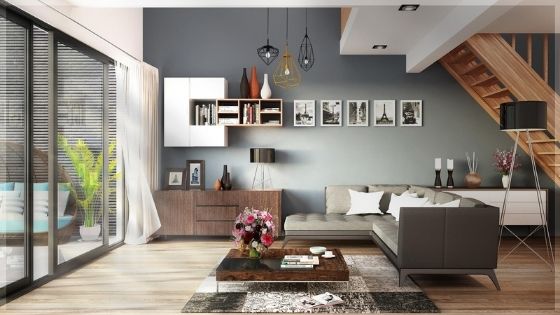Depending on which type of people you belong to, redecorating your home may sound like a charming adventure or a mission that’s all but impossible. The responsibility is great either way. Contrary to a popular vision, it’s not all about buying the right things. Rather, it’s how you arrange the space that you have at your disposal and what shapes the inner look of your home.
Dealing with space is scary both when you have too little of it and when it’s too ample. There’s an inherent risk in either case, and there has to be a lot of skill behind each successful solution. Or does it? It turns out you can boost your interior planning by using a free house planner app. Read below to find out how to do it.
1. How Poor Planning Can Ruin Everything
The gravest crime one can commit at the planning stage is to skip it altogether. Here are some common strategies that are bound to end in disaster:
- Limiting your planning to the straightforward act of lining your furniture, grouped according to its primary function, along the walls. The room will almost surely look empty and unlived-in.
- Filling the entire space with variations of one and the same color or, even worse, the very same hue. No matter how much you love this minty green, you’ll soon get sick of it unless there’s a neutral backdrop or a contrast. Even more importantly, color is not synonymous with style or ambiance. There are many more instruments that can be used to breathe life into your home, such as shapes and textures. Why neglect them?
- Planning a big room as a single space without singling out functional and/or stylistic areas. More often than not, such rooms turn out either empty-looking or cluttered.
- Squeezing all you have into whatever room you’ve got because you can. There’s no denying tiny homes can be challenging to plan, but it’s also vital not to overstep the fine line between functional and cramped.
Another mistake to avoid in planning your interior is being inconsistent with your priorities, like leaving too little room for studying in a household where 100% of the population are involved in some kind of academic activities. A space that doesn’t meet your demand is doomed to turn into a jumble of clutter or remain unattended.
2. Tips for Efficient Interior Planning
While no two homes are created equal, you’re almost sure to benefit from the following interior planning techniques:
- Let in as much light and air as possible. For instance, opt for a lower fridge if you can only place it next to the kitchen window; otherwise, the room might end up looking gloomy.
- Give preference to space-conscious, retractable, and multifunctional furniture.
- Use partitions to divide bigger spaces into functional areas and create private-looking and inviting nooks.
- Play with textures to make certain areas stand out as more relaxing than others. It’s usually advisable to have multifunctional rooms than ones dedicated entirely to a certain mode of activity.
3. Using Technology to Your Advantage
Designing your interior is much easier when you can get a bird’s-eye view of what kind of spaces you have along with the regular human perspective.
Try using an app like Room Planner for this purpose. The software lets you visualize your planning for free; all you need to do is enter the dimensions of your room and select the right shape.
Room Planner has a straightforward, user-friendly interface that enables you to easily manipulate various aspects of a given room. This way, you can imagine what it will look like with your solutions in place.
Avoid Haste When Planning Your Interior
If we were to give you just one tip for designing the interior of your house or apartment, it would be to avoid fuss at any rate.
Start small and build your perfect room around a single highlight, or try the opposite and begin by working out the big picture. Just take your time planning the space to make sure it’s both functional and attractive. A hassle-free visualization app such as Room Planner will reduce the amount of time and effort you have to invest significantly.

















